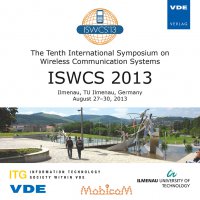A Novel Lifetime Extension Measure for Optimized Energy-Autonomous Wireless Backhaul Networks
Conference: ISWCS 2013 - The Tenth International Symposium on Wireless Communication Systems
08/27/2013 - 08/30/2013 at Ilmenau, Deutschland
Proceedings: ISWCS 2013
Pages: 5Language: englishTyp: PDF
Personal VDE Members are entitled to a 10% discount on this title
Authors:
Mannweiler, Christian; Chakraborty, Pratip; Schotten, Hans (Wireless Communications and Navigation Group, University of Kaiserslautern, 67663 Kaiserslautern, Germany)
Abstract:
Coordinated wireless point-to-point networks constitute a reliable and cost-efficient technology for providing backhaul connectivity for access networks in remote or topologically challenging environments, e.g. mountainous regions. Their flexibility allows for joint operation with any kind of access networks (including cellular), temporary or mobile deployment (e.g., for sport or entertainment events), or for full-fledged alternative of wired backhaul infrastructure. Furthermore, the majority of nodes forming the network usually rely on autonomous energy supply, e.g., from solar panels. Therefore, conserving energy constitutes an important operational objective to extend network lifetime. This paper introduces a novel metric (lifetime extension measure, LEM) for determining the effectiveness of means to extend network lifetime. We use it for evaluating topology control algorithms in a wireless point-to-point network. Based on a range of relevant parameters, among them total network capacity, current load in the access network, energy consumption of the considered topology, as well as battery level of nodes without permanent power supply, we present and apply a Backhaul Topology Optimization (BTO) algorithm for energy conservation while at the same time keeping network capacity and data throughput at satisfactory levels. Using results from simulations and analytical approximations for best and worst case network lifetime, we show that LEM can reliably evaluate the effectiveness of the BTO and similar algorithms.


